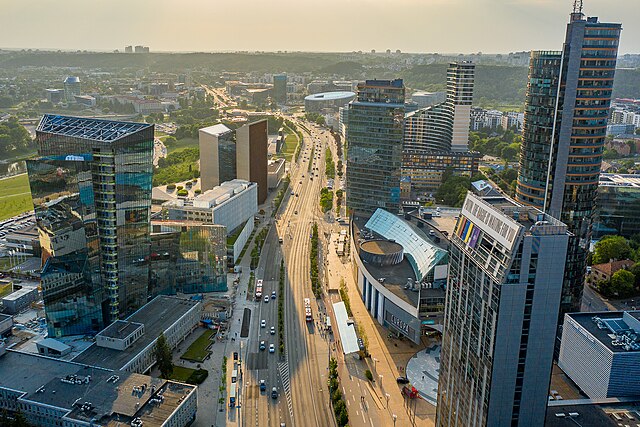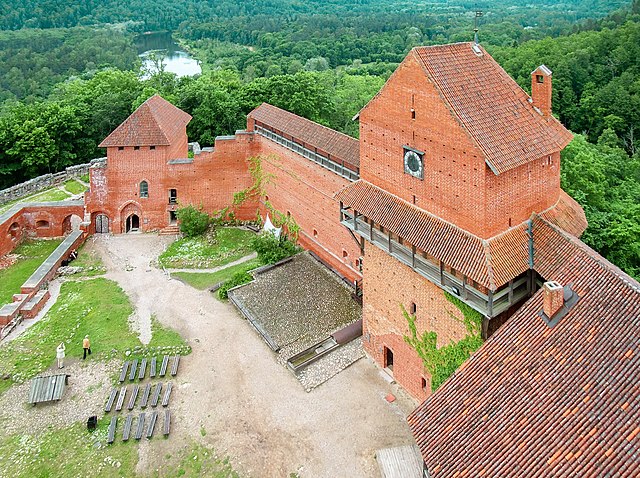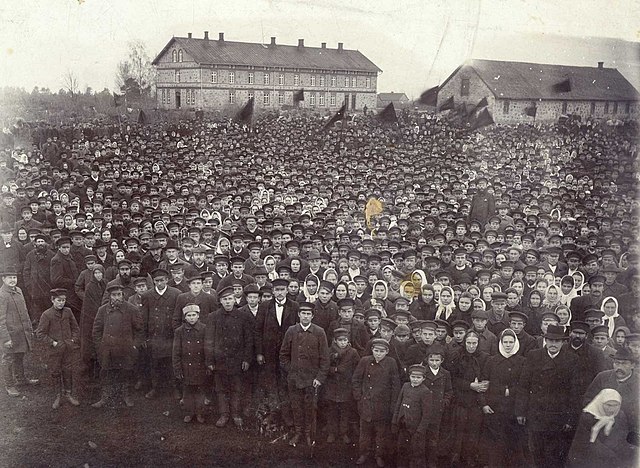The Baltic states or the Baltic countries is a geopolitical term encompassing Estonia, Latvia, and Lithuania. All three countries are members of NATO, the European Union, the Eurozone, and the OECD. The three sovereign states on the eastern coast of the Baltic Sea are sometimes referred to as the "Baltic nations", less often and in historical circumstances also as the "Baltic republics", the "Baltic lands", or simply the Baltics.
An improvised armoured train used in the Estonian War of Independence against Soviet Russia, 1919
According to the 1939 Molotov–Ribbentrop Pact, "the Baltic States (Finland, Estonia, Latvia, Lithuania)" were divided into German and Soviet "spheres of influence" (German copy).
Baltic Assembly session in Seimas Palace, in Vilnius, Lithuania
Downtown Vilnius
Latvia, officially the Republic of Latvia, is a country in the Baltic region of Northern Europe. It is one of the three Baltic states, along with Estonia to the north and Lithuania to the south. It borders Russia to the east, Belarus to the southeast, and shares a maritime border with Sweden to the west. Latvia covers an area of 64,589 km2 (24,938 sq mi), with a population of 1.9 million. The country has a temperate seasonal climate. Its capital and largest city is Riga. Latvians belong to the ethnolinguistic group of the Balts and speak Latvian, one of the only two surviving Baltic languages, a branch of the Indo-European language family. Russians are the most prominent minority in the country, at almost a quarter of the population.
Turaida Castle near Sigulda, built in 1214 under Albert of Riga
Latvians national rally in Dundaga in 1905
Jānis Čakste (1859–1927), the first president of Latvia
Red Army troops enter Riga (1940).








